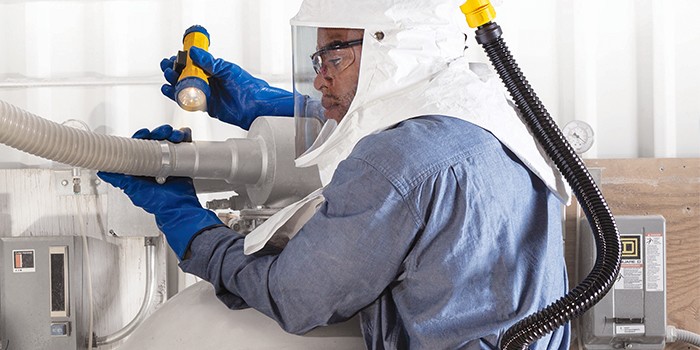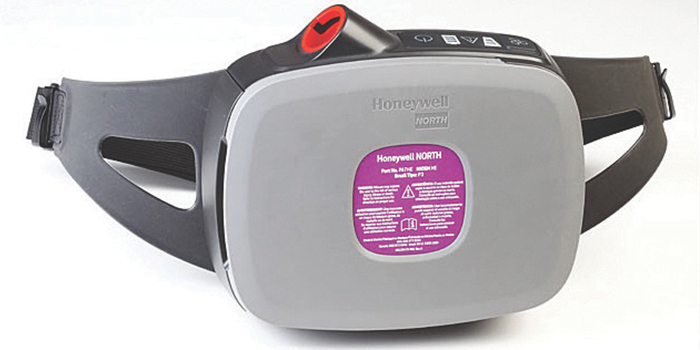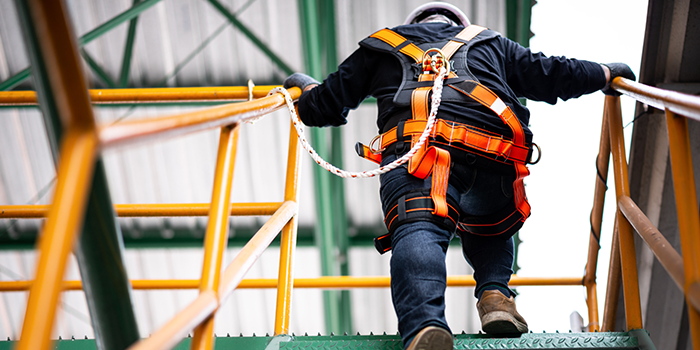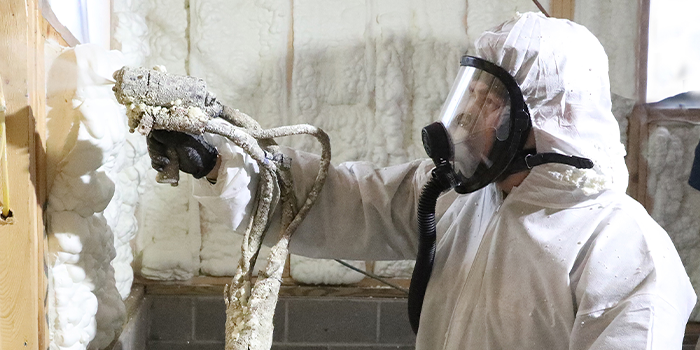Work Hard, Breathe Easier


JUPITER, FL – March 5, 2018 – When applying polyurethane foam, the respirator is a critical component of a contractor’s personal protective equipment (PPE). Equally critical is the selection and use of the correct respirator for the application, the working environment, and the safety and comfort of the user.
When spraying polyurethane foam in an exterior environment, contractors often can choose between air-purifying respirators (APRs) and powered air-purifying respirators (PAPRs). Personal comfort is often cited as an advantage when selecting the use of a PAPR over an APR. In warm working environments, the PAPR’s forced air circulation provides a welcome, cooling benefit to the user. In addition, the loose-fitting PAPR hood provides the user with a less restrictive experience than does an APR, which requires fit testing for proper use. Recent advancements in PAPR technology provide users with new benefits in both their use and personal safety.
A PAPR consists of a powered blower, which imports air from the surrounding environment, filters it through a particulate cartridge, and delivers the air via a hose to a hood or facepiece worn by the user. A PAPR is ideally suited for applications in which non-powered air-purifying respirators are not practical or in which a higher protection factor is required, yet where the atmosphere is not immediately dangerous to life and health and where there is an oxygen content of at least 19.5 percent. When used together with appropriate filter cartridges and facepieces or head covers, a PAPR provides respiratory protection against most dust, fumes, mists, as well as particulate radionuclides and radon progeny attached to dust, fumes, and mists.
For spray foam contractors, a PAPR is appropriate for use when the work is performed in an exterior or open environment.
RELATED How to Use the Oxygen Depletion Protocol for Attics and Crawl Spaces, The Code Council Celebrates 15 Years Dedicated To Creating Safe Buildings And Communities Worldwide, Hot Work: Attic Fire Control, Plastics Make It Possible® Honors the Everyday Heroes Who Protect Us And Safety Innovations That Protect Them
Traditional PAPRs have had separate, exposed functional parts as part of their system design, making them cumbersome and difficult to operate. Feedback from safety managers and PAPR users indicated a need for improvement—in the areas of design, cleanability, and reliability. Leading PPE providers are responding with new PAPR systems that feature the latest in high-tech materials and ergonomic design to improve worker comfort, productivity, and safety.

Offering convenience, comfort, and confidence, Honeywell offers belt mounted, PAPR platform
Blower:
The blower is the heart of the PAPR. It draws contaminated air through the filter cartridge and pushes a continuous flow of clean air to the user. Systems are programmed and calibrated at the factory to provide a steady and measured stream of air, even as the filter cartridge becomes saturated with contaminants. Advanced systems feature high-efficiency blowers with adjustable air speeds to keep users cool throughout their entire shift. Smart systems also include an intelligent alarm system that alerts the user when the battery charge or airflow level is low. The best systems will use audible, visual, and vibratory notifications to effectively and clearly communicate alarm status, even in loud, harsh conditions.
Battery and Charger:
A rechargeable battery pack powers the blower. The newest models feature a lithium-ion battery pack providing more power—
10 to 12 hours—for an entire work shift and then quickly recharge in only a matter of hours. Ease of use is essential—allowing simple slide-and-lock changeouts while securing the power pack from falling out during use. If so equipped, the onboard display will allow the user to evaluate the amount of remaining charge in the pack without installing it into the blower while alerting the user to any potential problems when in use.
RELATED The Code Council Celebrates 15 Years Dedicated To Creating Safe Buildings And Communities Worldwide, Hot Work: Attic Fire Control, OSHA to Hold Second Public Meeting , U.S. Construction Workers Will Suffer from Heat-Related Illnesses this Summer
Belt Assembly:
Working a full shift with any PPE demands a design that addresses both functionality and comfort. With a PAPR belt assembly, the proper ergonomic shape, and choice of materials will help evenly distribute the weight of the PAPR evenly on the worker’s body and keep it from slipping. A streamlined design will promote easy cleaning. An optional comfort pad that can be snapped onto the unit will provide even more cushioning support.
Breathing Tubes:
As the lifelines to the PAPR, newer design breathing tubes will be constructed of lightweight and highly flexible hose materials and feature a swiveling connection to prevent the hose from twisting or binding. Again, simple, durable connections—with a positive twist and lock motion ensuring the confidence of attachment—are preferred.
Cartridges and Filters:
Cartridges and filters must be selected as approved for use in specific work applications. Newer single, high-capacity particulate filters eliminate the need for multiple filters and can provide up to 99.97 percent filtration while meeting or exceeding NIOSH requirements.
Hood:
The PAPR hood assembly provides coverage and protection for the head, face, and shoulders. A large interior cavity easily accommodates the use of the PAPR in conjunction with the hood and construction of Tyvek® material will provide both durability and assure no absorption of sprayed substances. The breathable material and a large, integrated visor will promote ease of use and comfort. Disposability eliminates the need for decontamination. A peel-away cover lens eases replacement.
New PAPR systems feature dramatic advances over previous traditional designs, including state-of-the-art ergonomic designs, technology, and materials to deliver superior comfort, convenience, and safety so that users, while they may be working hard, can breathe easier.
Note: For additional information on respirator selection, refer to NIOSH Respirator Decision Logic 2004, available at https://www.cdc.gov/niosh/docs/2005-100/default.html. The document provides detailed selection guidance regarding specific NIOSH policies.
Disqus website name not provided.









































